Ancient Wars I
In the past of the current Mexican territory, there were civilizations that carried by the hand of their great prosperity, created magnificent cities that over time, disputed resources and trade routes, creating huge and vast empires. This website aims to give you a broader and more general vision of how people and their destinies were interwoven through their wars:
The Ancient Wars!
Preclassic Period: Olmecs and Otomangues
In the beginning of time, two ethnic groups were the generators of civilization, and the ones who founded the most towns in this land. The best known are the Olmecs, whose name comes from the Nahuatl language and means “inhabitant of the land of rubber”, whose main cities in the pre-classic period are La Venta, San Lorenzo, Laguna de los Cerros and Tres Zapotes. Over time they founded other cities such as Xicalanco, Huexotzinco, Cacaxtla and Tlachihualtepec, now known as Cholula.
The other major ethnic group is called “Otomanguean” and according to recent studies, it may be even older than the Olmec – as evidenced by the archaeological site “Yatachio” located in the present municipality of Tamazulapan del Progreso, Oaxaca, whose archaeological studies conducted by INAH date with an antiquity of 4,000 to 6,000 BC, whose archaeological studies carried out by the INAH date it with an antiquity of 4,000 to 6,000 B.C. It is considered that the origin of the Otomangues is the Tehuacan-Cuicatlan valley, where the domestication of corn also has its origin. The Otomangues populated all the land and with the passing of the centuries, their language formed several other languages. The cities they built were usually in valleys, but they had to be walled to avoid being invaded by other peoples. To solve this problem, they began to found towns and cities on mountain tops to make them easier to defend militarily from any enemy.
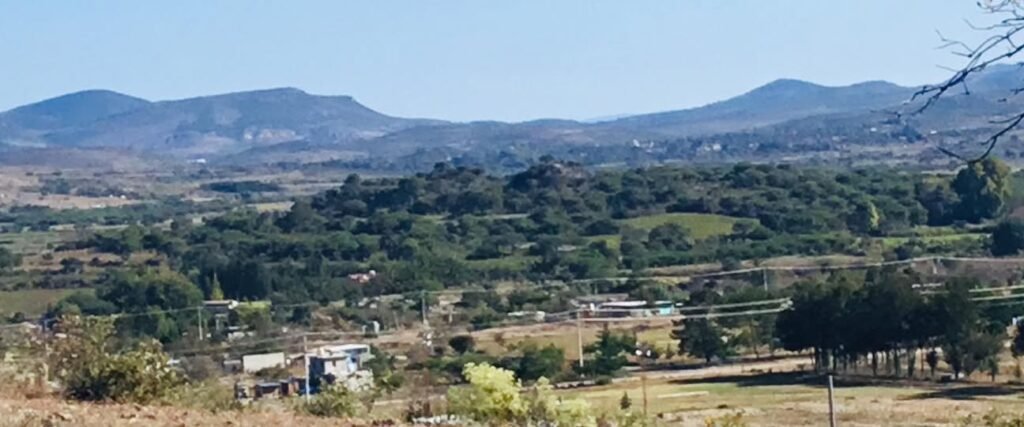
Yatachio archaeological zone (with monumental architecture) in the present municipality of Tamazulapam del Progreso, Oaxaca. Studied by Eulalia Guzmán, Alfonso Caso and INAH, but not yet rescued.
Trade and power: Monte Alban, Teotihuacan, Tikal and Mixteca Ñuiñe
After the eruption of the Xitle volcano, which ended the magnificence of Cuicuilco, founded around 2100 BC, many of its inhabitants went to Teotihuacan, (founded between 300 BC and 100 BC) whose language is not known, nor how they named themselves, but in recent opinions it is considered that its founders must have been an Otomague-speaking people.
Tikal was founded around 600 B.C. in the middle of the vast jungle of the Peten, while Monte Alban was founded in 500 B.C. on the top of a mountain, in the current capital of the state of Oaxaca, which helped it become the capital of the then Zapotec kingdom.
I should also mention the territory of the Mixteca Baja, called “Ñuiñe” for its own style of writing, ceramics, sculpture and architecture, with Zapotec and Teotihuacan artistic influences, and whose center is the “Cerro de las Minas” (Huajuapan old town) in the current municipality of Huajuapan de León, Oaxaca, founded in the late preclassic period.
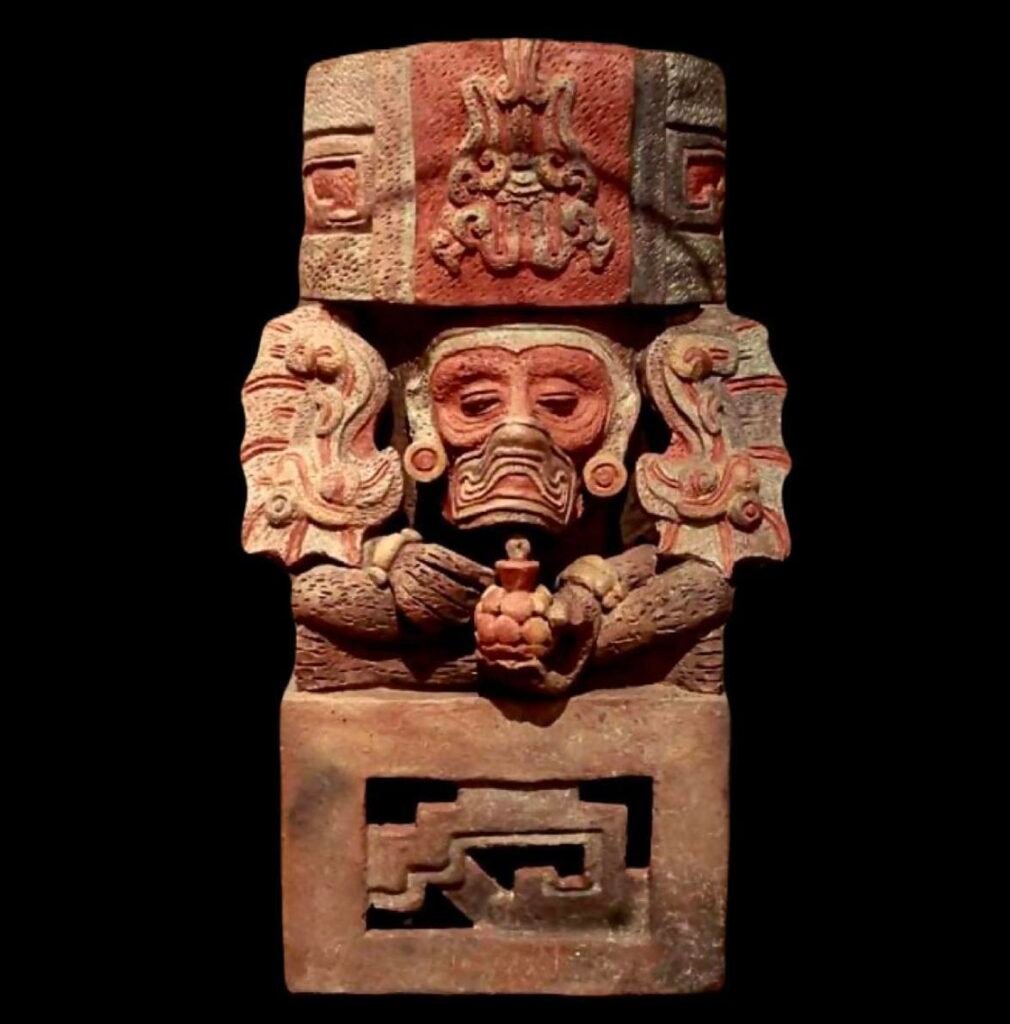
Sculpture of the “Old God” or “God of Fire”, from the Mixteca baja/Ñuiñe culture, Huajuapan de Leon, Oaxaca. Here you can see the Zapotec and Teotihuacan influence in its style.
In those ancient times, the Teotihuacanos extended their trade towards the Gulf of Mexico, and with it their influence. They also extended their commercial ties through the Mixtec territory, since the “Mixtec route” is the shortest way between Central America and the center of Mexico. In addition, the Mixtec territory is located in the middle of the Gulf of Mexico and the Pacific Ocean, which makes “la Mixteca” a territory of great wealth, full of great commercial activity, as we will see later on.
There is no evidence that the Teotihuacanos tried to invade the Mixtec territories militarily, but there is evidence of their cultural influence in the Mixteca Baja or Ñuiñe zone. What is known is that on their way to Central America, they came into conflict with the Zapotecs of Monte Alban, for control of trade routes, as well as gold for tribute. However, since the Zapotec capital was built on the top of the mountains, and was properly defended, it was impregnable for Teotihuacan.
Less fortunate, however, would be the great city of Tikal. Around 310 AD, Teotihuacan and Tikal had an established commercial relationship, but it was the abundance of exuberant resources such as jade and exotic feathers that motivated Teotihuacan’s ambitions. It was in the year 378 that “Búho Lanzadardos” sovereign of Teotihuacan, with the help of his general named “Siyaj K’ak'” (Fire that is born) defeated the Ajaw (King) “Chak Tok Ich’aak” (Jaguar Claw) ruler of Tikal, meeting his death that same day. Búho Lanzadardos put his son “Yax Nuum Ayiin” as the new ruler, marrying him to a princess, daughter of Chak Tok Ich’aak (Jaguar Claw) to start the new dynasty that would rule Tikal. The grandson of Búho Lanzadardos, ruler of Teotihuacan would be called Siyaj Chan K’awil (Stormy Sky), and since then both cities shared the destiny of both cities whose relationship, at the beginning prosperous, culminated in a dismal end, marked by the discontent of the lower social classes towards the ruling classes.
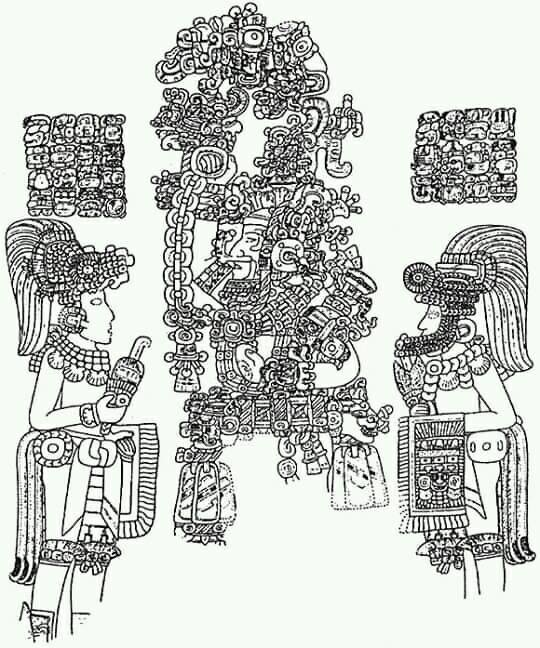
Stela 31, represents the conquest of Tikal in 378. On one side is Buho Lanzadardos, and on the other is his son, Yax Nuum Ayiin.
The fall of Teotihuacan, according to new studies carried out by archaeologist Linda Manzanilla, is located in the middle of the VI century, in the year 570 of our era. The reasons for the fall of the great imperial city are due to different factors: The internal cause is a generalized revolt by the Teotihuacan neighborhoods that together with their leaders would have achieved a certain autonomous power within the city. The reasons seem to be an excessive deforestation added to a prolonged drought and the appearance of new centers of power -like Cantona and Xochicalco, among others- that competed for the commercial routes, which resulted in Teotihuacan lack of food, lack of supplies and materials and a severe economic crisis, which the rulers of Teotihuacan could not contain.
Tikal versus Calakmul and “The Kingdom of the Serpent”.
Located in the north of today’s Yucatan Peninsula, Calakmul has its origins in the Preclassic, beginning its prominence in the Late Preclassic (400 BC – 250 AD). It began its political expansion through networks of influence made through alliances. Their “Kuchkabal” – a name in Maya to refer to a “kingdom” – was called “Kaan” which in Maya means “Serpent”, so that Calakmul was the capital of the “Kuchkabal Kaan”, i.e. “The Kingdom of the Serpent”.
It was in the 6th century, with “Tuun K’ab ‘Hix” that the alliances at the head of Calakmul came to the surface to confront each other later on. As an important antecedent, in the year 537, the “Ajaw” of Yaxchilan -a Mayan kingdom that had managed to be independent until then- made war on the “Ajaw” -Mayan name for governors- of Bonampak, Lakantuum and Calakmul, for the control of their respective parts of the Usumacinta River. Bonampak and Lakantuum were conquered, but Calakmul in revenge for this event, conquered Yaxchilan, thus obtaining a strategic position to the east and west of Tikal.
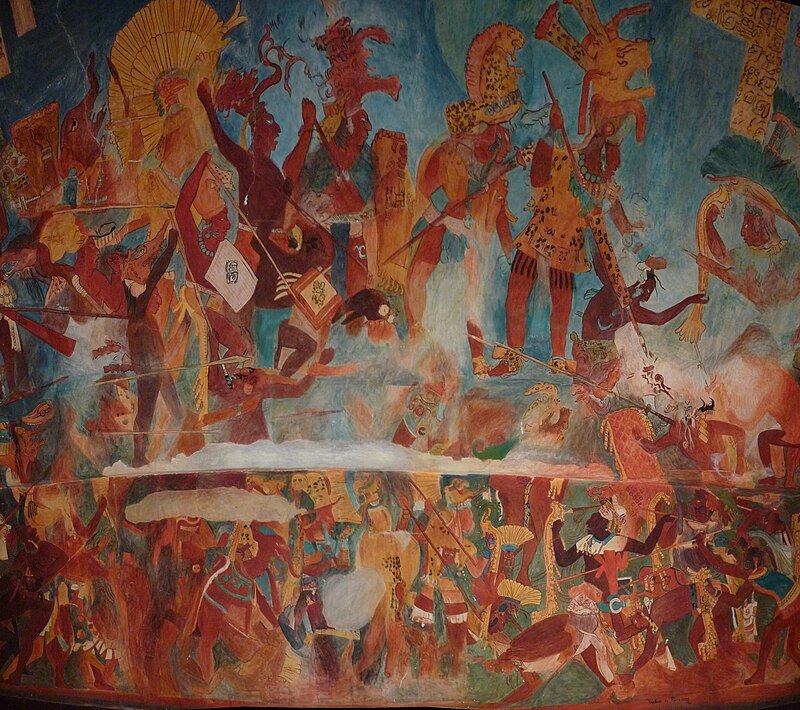
Bonampak mural depicting early military campaigns between Bonampak and Yaxchilan
Tikal, for its part, continued to be the only political and military superpower in the south, dominating key territories along the Usumacinta River, which gave it control of the richest commercial zone in the entire Yucatan Peninsula, setting the prices for merchandise traffic at will.
It was in the year 562 when Calakmul under the rule of “Witness of Heaven” launched its military offensive against Tikal. The Ajaw of Tikal was among those executed, and the rest became vassals of the flourishing super power coming from the north of the Yucatan Peninsula, marking a lapse of time of about 100 years without Tikal having any kind of prominence. This is how the Ajaw of Calakmul acquired the title of “Kolomte” which is king of kings and in Spanish would be synonymous with “Emperor”. After 572 “Uneh Chan” succeeds “Witness of Heaven”, organizing military campaigns like his predecessor, and taking the war to Palenque (Palenque, Chiapas) in the years 599 and 611.
In the year 636 “Yuknoom Ch’een II” came to power in Calakmul, leading the “Kingdom of the Serpent” to confront other kingdoms in order to expand its power. Meanwhile, in the anonymity that gave the silence of the supposed subordination, Tikal was gradually strengthened without raising any suspicion. In the year 620, two main cities known as “Caracol” and “El Naranjo” were at war. It is in the midst of this situation that Calakmul declared war on Tikal, returning the old enmity, in the year 657. Calakmul, however, managed to maintain and expand its hegemony in the high and low zones of the Usumacinta River.
In the year 686, Yuknoom Ch’een II was succeeded by his son “Yich’ak K’ahk'”, who would carry on his shoulders the legacy of his ancestors. In the year 695, Yich’aak K’ahk confronts “Jasaw Chan K’awiil”, the new Ajaw of Tikal who took power with the help of the noble classes and the people dissatisfied with the established situation. From this moment on, the war took on the magnitude of focusing on the total annihilation of one side or the other. The war was bloody, and the captains of the Kuchkabal Kaan i.e. of the “Kingdom of the Serpent” were defeated, captured and sacrificed. Calakmul was defeated, giving way to the consequent acts of humiliation, that the Ajaw Jasaw Chan K’awiil of Tikal, commanded to immortalize carved in one of the wooden lintels of Temple I of Tikal, in which the Ajaw of Tikal, declares that he captured the flint shield of Yich’ak K’ahk (Kolomte of Calakmul), dated August 5, 695 of our era.
In Calakmul there was an internal conflict, where the ruling elites deliberated. The solution was to open political and commercial relations with the kingdoms further north of the Yucatan Peninsula, and very helpful were the ancient relationships they had to the south with sites such as El Naranjo, Dos Pilas and El Peru (an archaeological site in Guatemala that should not be confused with the country “Peru”). Although Calakmul had been defeated militarily, it still maintained its autonomy and influence in important sectors of the Peninsula. However, the two protected kingdoms of Calakmul, El Naranjo and Peru are conquered by Tikal. The dismemberment of the Kingdom of the Serpent is inescapable, and with it the Late Postclassic comes to an end. From the 61st stela of the siege, it is known that in the year 909, the ruler of Calakmul “Aj Took” initiated the failed attempt of military recovery of Calakmul. The style of the stelae is decadent, trying to imitate those of the classical period. In the 10th century, Calakmul and other Mayan areas were abandoned, being used by a few small groups of settlers to carry out ritual activities – as happens today with many archaeological sites in the 21st century – and the Postclassic period began.
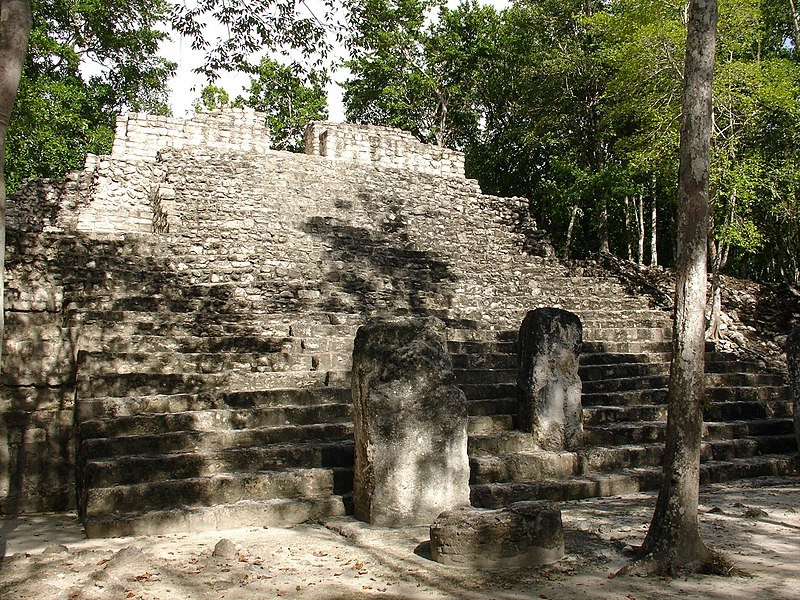
Site structure: Temple and stelae
For their part, wars forced people to focus more on the city of Tikal, which caused intensive agriculture and therefore the deterioration of the environment following erosion and deforestation, which resulted in a decrease in population. Tikal and its surroundings significantly lost population between 830 and 950. In the second half of the ninth century there was an attempt to reinstate royal power – as evidenced by a stele erected in the Great Plaza by “Jasaw Chan Jawiil II”, the last monument erected before the city fell silent. At the end of the IX century, the great majority of the population had abandoned the city, the palaces were occupied by illegal settlers, blocking the rooms with materials of the same city. Before the definitive abandonment of Tikal, the respect for the ancient rulers had disappeared, looting tombs of the northern necropolis, of which the most accessible were looted in search of jade. In the year 950 the city was almost uninhabited, and in the X and XI centuries the last inhabitants abandoned Tikal, and the jungle reclaimed the territory during the following millennium, giving way – as mentioned before – to the Postclassic Period.
The great Tula
Founded in the 7th century, around the year 713 by the Tolteca-Chichimeca, Tolteca Nonoalca and Tolteca-Otomí peoples. It is considered the successor of Teotihuacan and would constitute a complex social, political and cultural development for the society, showing its decadence towards the XII century. Its flourishing is largely due to the great King Quetzalcoatl -not to be confused with Quetzalcoatl as a deity- and its fall to the dispute between followers of the cult of Quetzalcoatl -the deity, not the king- and Tezcatlipoca, the latter being the victors and in whose charge was the destruction of the Great Tula, under waves of Chichimecas coming from the North of the current Mexican Republic.
When the great city of Tula was at its peak, it is said that an embassy from Tula went to the city of Huapalcalco (in the present municipality of Tulancingo de Bravo, Hidalgo) to meet with a young, middle-aged man by the name of “Dos Caña”, who served as a priest of the cult of Quetzalcoatl, and who had recently arrived in Huapalcalco. The tales of wisdom that were spoken of this young man were so famous that they had reached the great city of Tula. This retinue was looking for him to be the new ruler of Tula. After the interview, the young man explained that he had just arrived in Huapalcalco, and that after 4 years, in which he would live practicing a spiritual retreat, he would go to Tula to govern. So it was and at the end of those 4 years he went to the great Tula, where he would rule and would go down in history as a transcendental figure: The last living representative of Quetzalcoatl, -mythical character- who would give life forever to his legend, tried to overshadow later by Christianity, replacing him by force by Jesus.
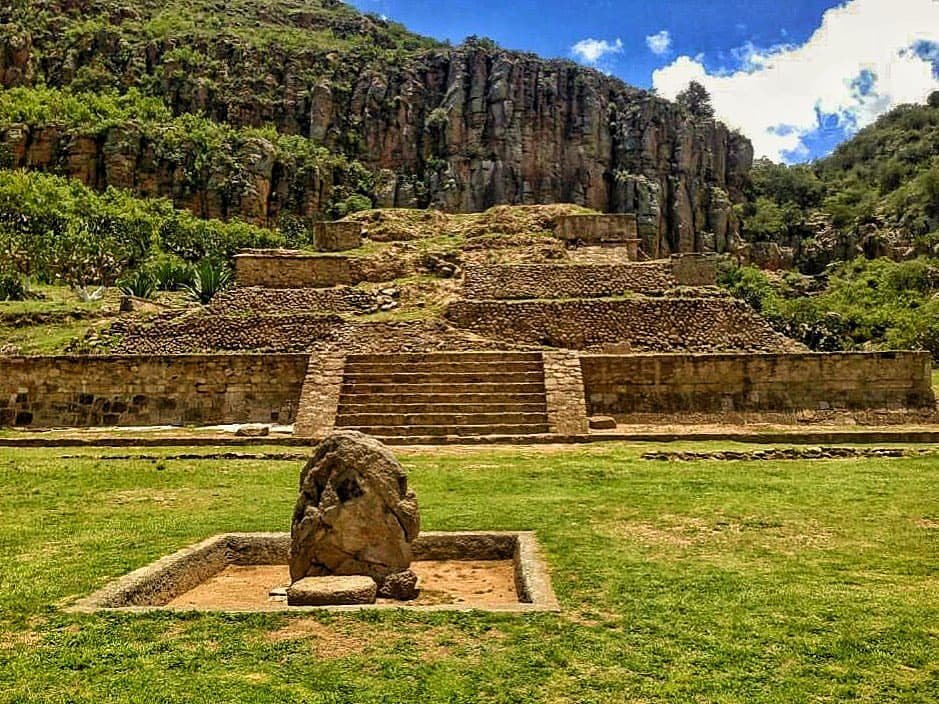
Archaeological zone “Huapalcalco” In the current municipality of Tulancingo de Bravo, Hidaldo, Mexico.
This is how Quetzalcoatl spoke
…To be continued…
